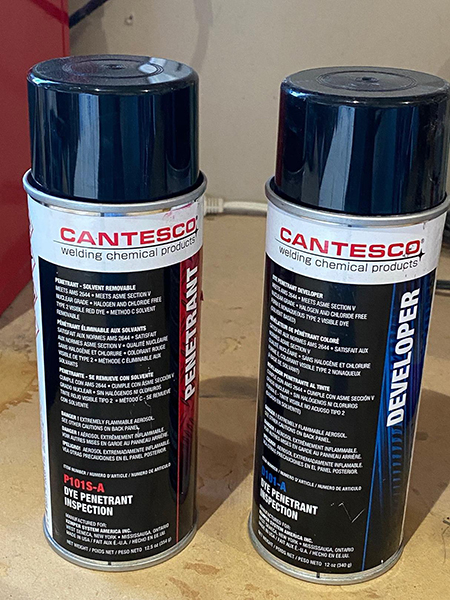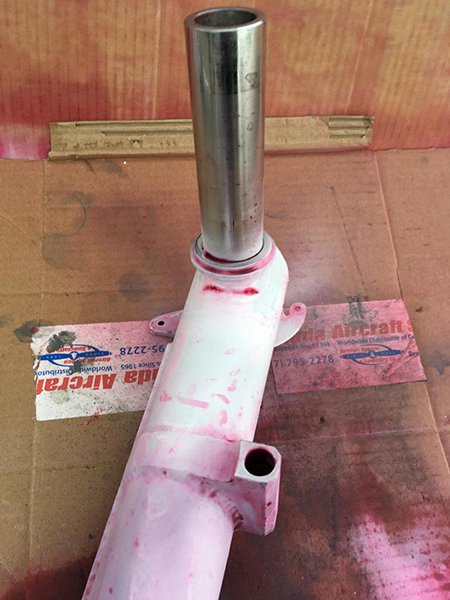Dye-Penetrant Crack Detection
By Jeff Seaborn, Chair, EAA Canada Council
February 2021 – After 7 years, and 350 abusive aerobatic flight hours, I decided this winter would be a great time to service my DR-107 One Design and fix some issues that have been starting to show.
One project was to thoroughly inspect the flying wires on the tailplane. The tailplane is made into a rigid structure using four pairs of flying wires. Two wires above and two wires below each side of the stabilizer stiffen and allow some ability to twist or straighten the structure. I used a commercial dye-penetrant system from Grainger to check for cracks and damage. Dye-penetrant testing is an easy four-step process. Coat with the penetrant. Clean. Coat with the developer. Clean again. I learnt the last step is important.
The penetrant is a deep red, oily fluid that is initially sprayed onto the test piece. After about 15 minutes of dwell time, the penetrant is cleaned from the surface. Any crack or rough surface holds some of the penetrant which really shows when the developer is sprayed on. The developer is a white, chalky component and a few minutes after it's sprayed onto the test piece it really shows where cracks exist. The good news is that all 8 flying wires and their respective clevises passed with no concern. Unfortunately, I didn't clean things well enough, and I found that the developer also acts like a binding agent. After threading the clevises back on to the threaded rods, a couple of clevises seized. So much for adjustability.
As anyone who's ever looked for flying wires knows, there haven't been too many options. There had really been only one supplier since they were first made in WWI. That supplier had a monopoly, and their prices and delivery weren't all that friendly. I'm still waiting for a price from them but they quoted me a delivery of 16-20 weeks. That would have meant no flying until May or June!
Scouring the internet, I found a new source of flying wires out of New Zealand. Old School Aero makes flying wires in all shapes, sizes, lengths, finishes and end fittings. You name it, they will make it. A little background as told to me by Russ from Old School Aero.
Peter Jackson started a WW1 factory in Wellington and built quite a few (93) WW1 aircraft, and we built many flying wires and tie rods for his aircraft. Since then we've come to export all over the world, and are approved supplier to the Shuttleworth Trust in the UK, and have supplied some strange wires to the French Air & Space Museum at Le Bourget in France.
I think it's a pretty strong endorsement that they are an approved supplier to the Shuttleworth Collection. Especially when you consider that the other manufacturer of flying wires is in the UK where the Shuttleworth Collection is located. I'm looking forward to seeing these wires. I will follow up with a more detailed article in a couple of months once the wires arrive.
Russ has an incredible amount of aviation experience and he loves strange and rare aircraft. If you're looking for flying wires for your one-of-a-kind antique or you need to replace the flying wires on your Cub or homebuilt, drop Russ at Old School Aero a line.

Spray cans of penetrant and developer.

Photo of the gear leg on my Dalotel project.
